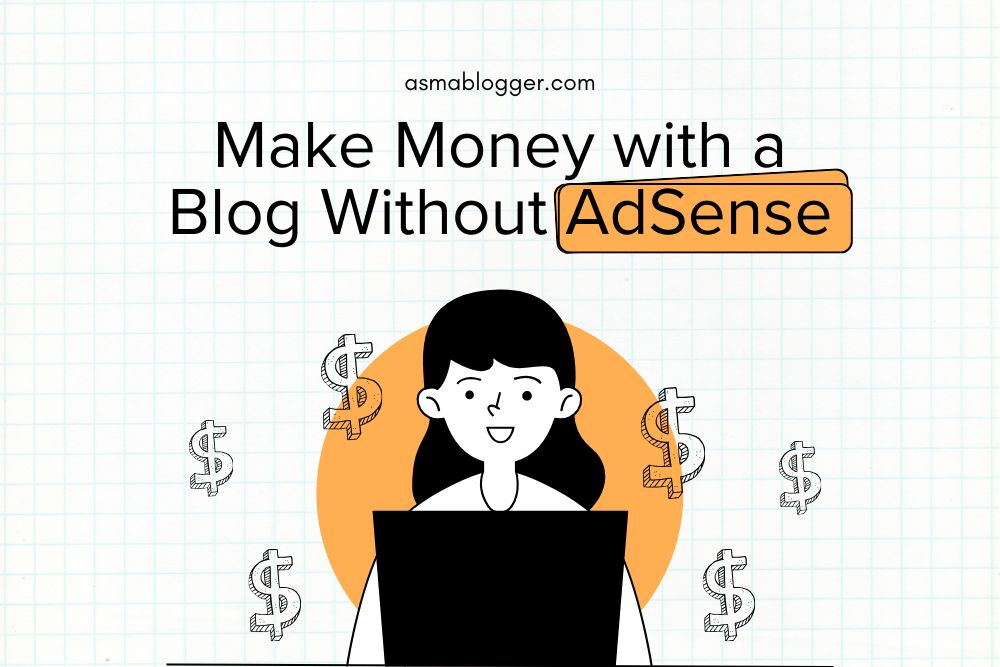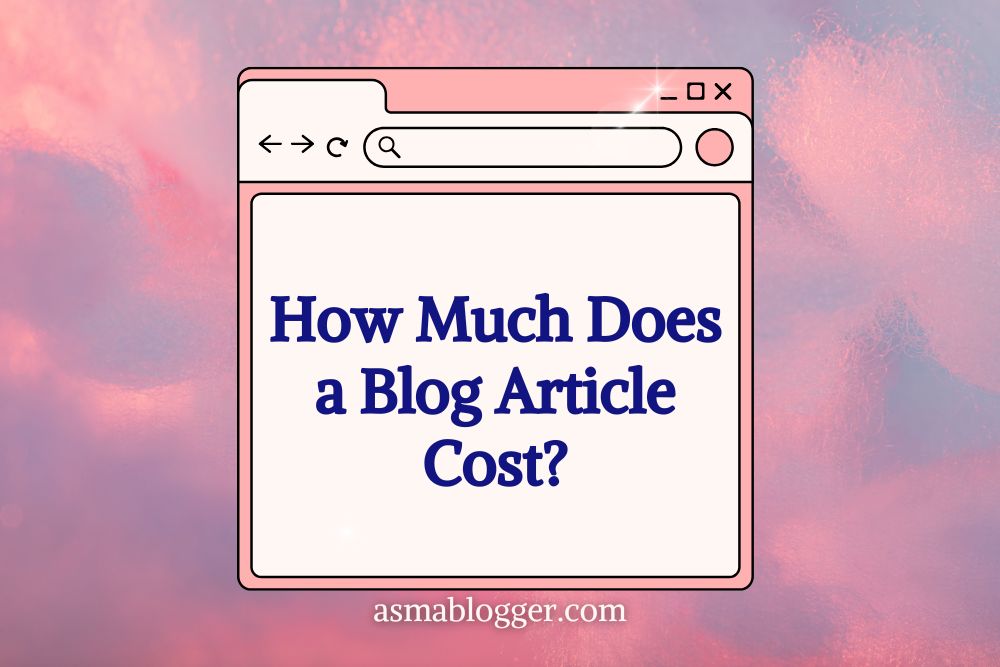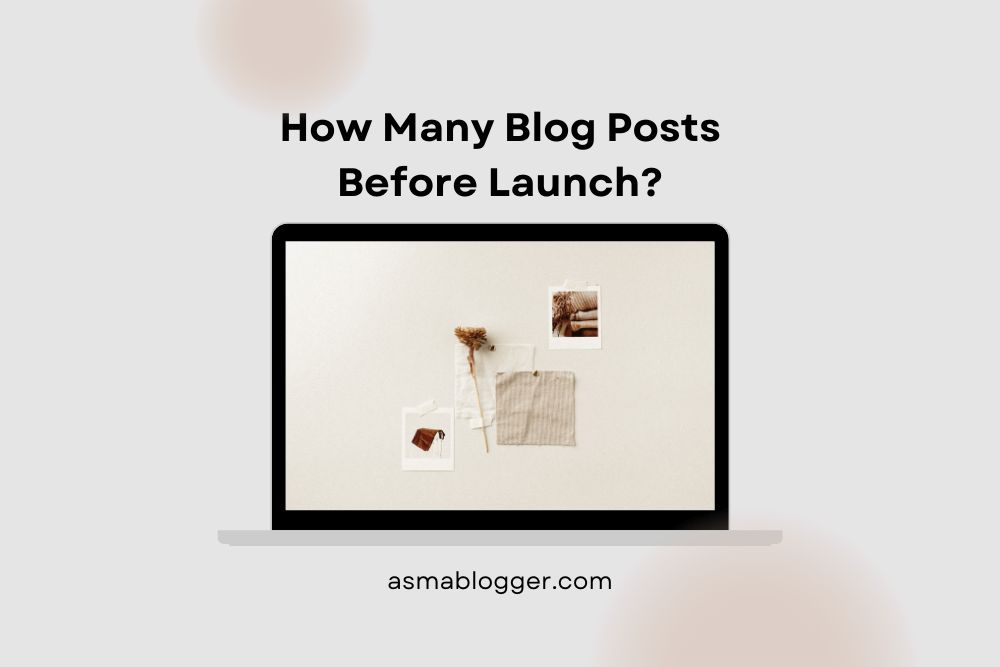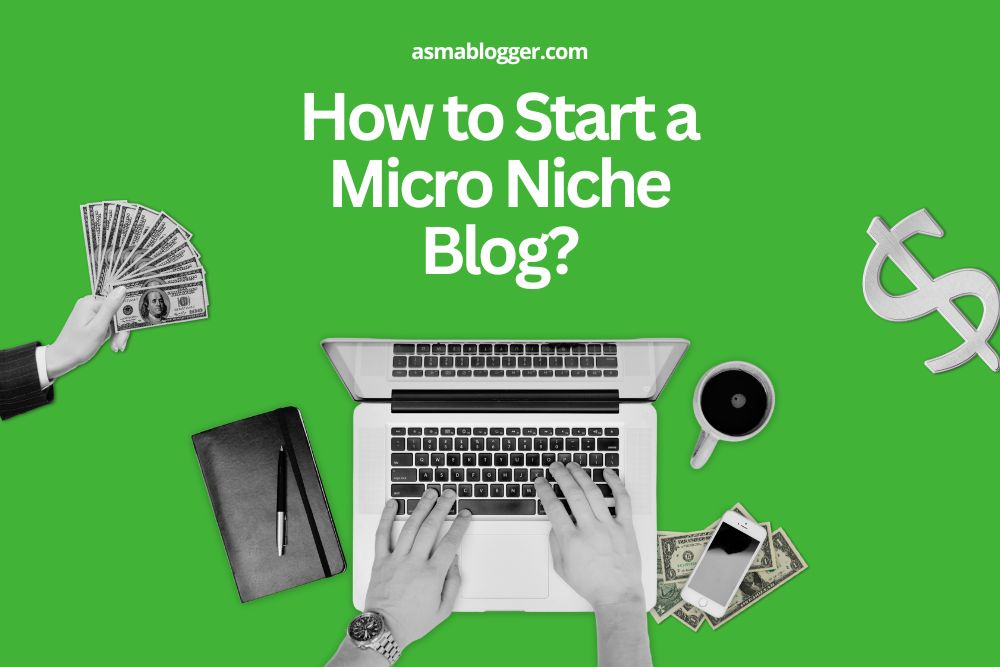While many dream of making a living through blogging, the reality is striking: 10% of bloggers earn nothing at all, and 28% make less than 30 cents per day! This highlights a critical truth: most bloggers don’t earn enough to rely solely on their passion for writing. AdSense is often seen as the go-to monetization method, but it’s far from the only option. Exploring diverse revenue streams is essential for anyone looking to turn their passion into profit. If you’re ready to learn how to make money with a blog without AdSense, I’m excited to share strategies that really work! Let’s dive in!
Table of Contents
ToggleOption 1: Affiliate Marketing: Promote Products You Love (How to Make Money with a Blog Without AdSense)
Affiliate marketing is not just about dropping links and cashing in. Let’s dive into what works and what doesn’t, as well as some lessons I learned along the way.
1. Why Affiliate Marketing Makes Sense for Bloggers
Affiliate marketing fits naturally into blogging, especially when you’re genuinely excited about the products:
- Builds Trust with Readers: If you’re truly using a product, it shows. Readers pick up on that authenticity, and it goes a long way toward making them trust your recommendations.
- Brings in Passive Income: Once those links are up, they keep working for you, even while you’re sleeping. Now, don’t expect instant cash flow, but over time, those small earnings can add up.
- Engages Your Audience: A well-placed recommendation can spark conversation. I’ve had readers message me or comment, curious about a product I shared. It’s a fun way to connect and share helpful info, too!
2. Get Started with Affiliate Programs
Jumping into affiliate marketing is easier than it seems. But I’ll be honest—there are a few tricks to setting yourself upright. Here’s a basic roadmap:
- Choose Programs that Match Your Blog: It’s tempting to sign up for every program out there but stick to ones that make sense for your blog. If you’re all about healthy recipes, a kitchen gear program will probably work better than tech gadgets.
- Sign Up and Grab Your Links: Once you’re in, it’s pretty easy to start pulling links for the products you want to share. Amazon Associates is a good beginner option, but programs like ShareASale or CJ Affiliate also offer many choices.
- Start Small and Focused: When I first started, I tried joining too many programs at once—it’s overwhelming. Pick one or two, focus on those, and get a feel for what works.
- Create Value, Don’t Just Sell: People can tell when they’re just being sold to, so use these links thoughtfully. If you’re writing a recipe, mention the specific blender you’re using or a favorite spice brand. Make it feel natural like you’re just chatting with a friend.
3. Make Your Affiliate Links Count
You’ve got the links; now, here’s the magic part—getting those clicks! Here’s what I’ve found:
- Place Links Naturally: Random links don’t usually get clicks. I’ve found that adding them where they feel part of the flow works best—like in the middle of a tip or just after describing how a product helped me.
- Shorten and Track Links: If you’re using long, messy links, clean them up! Tools like Pretty Links let you track and shorten links, which helps keep your blog looking neat and lets you know what’s working.
- Experiment with Placement: Sometimes, a link at the start works better than at the end, or vice versa. It’s trial and error, but you’ll quickly see what clicks with your readers (literally).
- Share Real Experiences: Include a personal story if you’re talking about a product. For instance, I recommended Hostinger as a hosting platform because it’s what I personally use and love—it makes a difference when people feel that personal connection.
- Casual Call-to-Actions Work Best: Sometimes, readers need a nudge to check something out. Try phrases like “take a peek here” or “see what I’m talking about” – it sounds more like how you’d talk to a friend.

Related Post: Where should you consider inserting calls-to-action throughout your blog post?
Affiliate marketing isn’t a get-rich-quick scheme. You’ll need to adjust your approach and accept that some products won’t resonate with your audience. Focus on recommending what you truly love—your passion will engage readers and drive clicks!
Option 2: Sell Digital Products: Turn Knowledge into Passive Income (How to Make Money with a Blog Without AdSense)
Selling digital products is a great way to earn passive income by sharing your knowledge. If you’ve thought, ‘I could write a guide!’ or ‘I should teach this,’ you’re on the right track. Here’s how to get started.
1. Types of Digital Products to Sell
Choosing the right digital product can feel overwhelming at first, but don’t worry—you can make it simpler by thinking about what you already know well or enjoy doing. Here are some ideas that are not only popular but also manageable to create:
- Ebooks: If you have expertise, writing an ebook is a great option. Choose a topic your audience likes, like a beginner’s gardening guide or easy recipes. Keep it short—people prefer ebooks they can read in a few hours. Use Canva for simple, professional designs.
- Online Courses: Platforms like Teachable and Udemy make course creation easy. Start with a few video lessons or a PDF guide, then expand if desired. Remember, people value short, actionable content—avoid lengthy filler
- Templates & Printables: Create time-saving templates or planners. Whether it’s a budget tracker or workout planner, people pay for simplicity. Google Docs and Canva are great tools for making customizable templates.

2. How to Create High-Quality Digital Products
Creating your digital product can feel like a marathon if you don’t pace yourself. Here are some tips I learned the hard way that’ll hopefully make your process smoother:
- Start with a Clear Plan: Before diving in, outline your ideas to avoid getting stuck later. Break your topic into sections and focus on key takeaways—people appreciate the structure, especially for paid content!
- Keep Your Audience in Mind: Ask yourself, “Is this what my audience needs?” Picture explaining the content to a friend unfamiliar with the topic. If they understand, you’re on the right path.
- Invest in Good Tools: Sometimes, spending a little on quality tools is worth it. While Canva has free options, a Pro subscription unlocks more templates. For videos, Loom is great for screen recordings, and iMovie or your phone’s editing app can handle basic edits.
- Test Before You Launch: Get feedback from trusted friends or colleagues before releasing your ebook or course. You’d be surprised how often they spot typos or suggest tweaks that make a big difference.
3. Promote Your Digital Products
Creating a high-quality digital product is only half the battle—you’ve got to get it in front of people. Here’s what I’ve learned about promoting digital products without sounding too pushy:
- Share Your Story: Connect with people by sharing why you created your product. Instead of just listing features, let them know what inspired you—like writing a budgeting ebook after learning to manage your finances.
- Build an Email List: Regularly share value-packed content with subtle mentions of your product. People enjoy advice more than hard sales.
- Use Social Proof: Gather testimonials from early buyers. A simple “This helped me!” can boost trust—share these on your site and social media.
- Try a Limited-Time Offer: Everyone loves a good deal. Launching with a discount or a limited-time offer can create urgency and attract buyers who are on the fence.
Related Post: How to Write a Collaboration Email That Closes the Deal?
Selling digital products is easier than it looks. Take it step by step, stay authentic, and avoid rushing. The sense of achievement from your first sale is amazing, and it could lead to a steady stream of passive income!
Option 3: Offer Paid Memberships or Subscriptions (How to Make Money with a Blog Without AdSense)
Starting a paid membership or subscription service on your blog can bring in a steady income, but it’s more than just a paywall! I initially thought, “How hard could it be?” There’s a learning curve, especially for beginners.
1. Understanding Membership Models
Memberships vary widely, so pick one that suits your offerings and audience needs. Some bloggers offer exclusive monthly content or tips, while others create online communities with live Q&As and personalized advice. My tip? Start small and grow from there.
Here’s what I learned about popular models:
- Content Access: Offer members exclusive blog posts, videos, or tutorials.
- Community Access: A dedicated forum or group where members can connect and share experiences.
- Educational Resources: These could be structured courses, worksheets, or live coaching sessions.
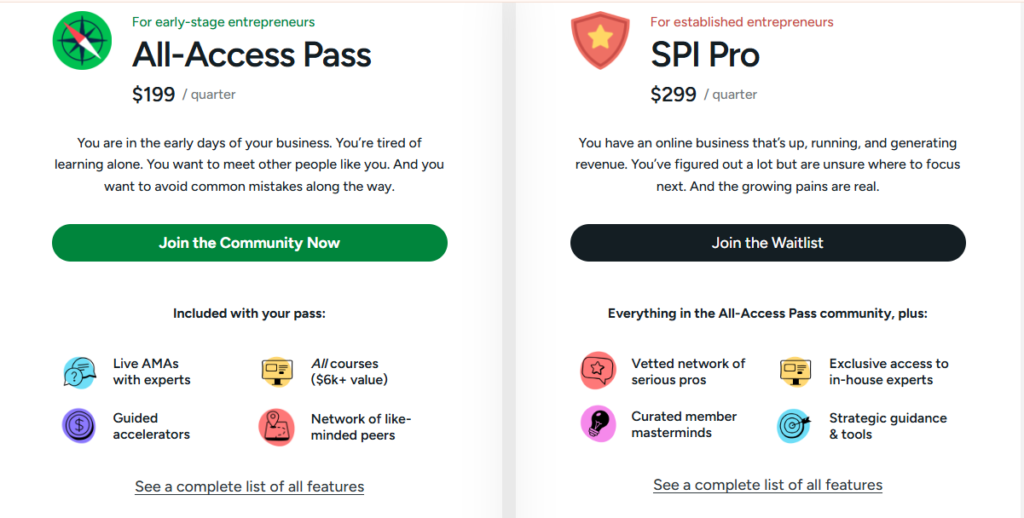
It’s easy to want to offer everything at once but hold back! Begin with one or two valuable perks that are well-planned. Once you gain traction, you can gradually add more features to your membership.
2. Set Up a Membership System on Your Blog
For your membership, consider MemberPress, Patreon, or WordPress plugins. I found MemberPress user-friendly. Just make sure to have a content schedule ready before launching!
Some helpful tips:
- Choose the Right Platform: Look for one that matches your needs without overcomplicating things. MemberPress is good for WordPress, while Patreon can be a good option for creators.
- Automate as Much as Possible: Integrate a payment processor and set up auto-renewal options so you don’t have to handle each transaction manually.
- Create a Content Calendar: I’m discussing planning out a few months of content. It’s stressful trying to create new content every month without a plan.
3. Market Your Membership Program
Once your membership is live, promoting it is key. I quickly learned that people need a little push to join a paid service. Email newsletters and social media posts can be your best friends for getting the word out!
Here’s what worked best for my client:
- Email Teasers: I sent out short, engaging emails to my list, giving them a taste of what they could access in the membership.
- Limited-Time Offers: Occasionally, I’d offer a discount for new members during the first week of launch. People love a good deal!
- Behind-the-Scenes Previews: Sharing sneak peeks on social media helped build interest. I’d post short clips or snippets of upcoming content to show the value of joining.
Marketing a membership is an ongoing task. There’s no “set it and forget it” here. But the satisfaction when someone values your work enough to subscribe? It’s completely worth it.
Option 4: Sponsored Content: Partner with Brands in Your Niche (How to Make Money with a Blog Without AdSense)
1. What Sponsored Content Is and How It Works
So, let’s talk about sponsored content. It’s when a brand pays you to promote their products or services. Sounds simple, right? But there’s more to it than just slapping a logo on your blog.
- Be Transparent: Always let your readers know when a post is sponsored. A little disclaimer at the top works wonders. It builds trust and keeps everything above board.
- Use Proper Tags: Remember to use “nofollow” links to avoid any trouble with Google. It’s a small step that makes a big difference.
2. Find Brand Sponsorship Opportunities
Finding those brand partnerships can feel like a treasure hunt, and trust me, it’s not always easy. Here are a few tips that helped me score some great deals:
- Direct Outreach: Don’t hesitate to reach out to brands you love. Send a friendly email or a direct message on social media. Just be genuine!
- Create a Media Kit: This is a little portfolio that shows off your blog stats, audience demographics, and your social media reach. It’s your resume for brands.
- Use Sponsored Content Platforms: Websites like Izea or PayPerPost can connect you with brands looking for sponsorship.

3. Create Quality Sponsored Posts
Okay, you’ve got a sponsorship, now what? Writing the post can be the fun part, but there are some things to keep in mind:
- Stay True to Your Voice: Your readers follow you for a reason. Keep your writing style consistent, even when it’s sponsored. It should feel like a natural extension of your usual content.
- Share Personal Stories: Relate your experiences with the product. Did it help solve a problem? Was it love at first sight? Readers love real-life stories!
- Provide Practical Tips: Give your audience something they can use. For instance, if you’re reviewing a kitchen gadget, share recipes or tricks that showcase its value.
Related Post: How to Write a Sponsored Blog Post That Converts?
Creating sponsored content can be enjoyable! It’s a great way to connect brands with your audience. Just remember to keep it authentic—when your style matches the brand’s message, it’s a win for everyone!
Option 5: Freelance Services: Use Your Skills to Generate Income (How to Make Money with a Blog Without AdSense)
Freelancing through your blog is both exciting and challenging. If you’re wondering how to make money with a blog without AdSense, this is a fantastic option. Turn your skills into paid work, and when it’s busy, it’s a true game-changer!
1. Types of Services You Can Offer
There are so many freelance options for bloggers, often without needing new skills. Here are some popular services, plus tips from experience:
- Freelance Writing: This is a natural fit. Whether it’s articles, e-books, or social media posts, writing can provide steady income. Just keep an eye out for good clients who appreciate quality.
- Blogging: Many businesses need help with SEO, analytics, or editing. If you’re already doing this for your site, why not get paid? It’s fulfilling work that builds valuable connections.
- Social Media Management: This task is time-consuming, and many lack the patience for it. Managing comments, scheduling, and creating content is always in demand. Tools like Hootsuite or Buffer can simplify the process!
Related Post: What Is a Blog Manager, and Is It Worth It?
2. Set Up a Service Page on Your Blog
Creating a service page is essential, even if it’s simple. The goal isn’t to make it fancy but to keep it clean and welcoming.
- Explain What’s Offered: Start with a short intro—just a couple of sentences—about what types of services you offer. Something like “Offering freelance writing, blog management, and social media services for small businesses and bloggers” is straightforward and effective.
- Consider Pricing Information: Some freelancers show a starting rate, while others leave it open. It’s really about what feels right for you. A range can help potential clients know if you’re within their budget without you having to answer emails constantly.
A page that’s direct and friendly can be surprisingly effective. People want to see what’s offered and how to reach you, without too much fluff.
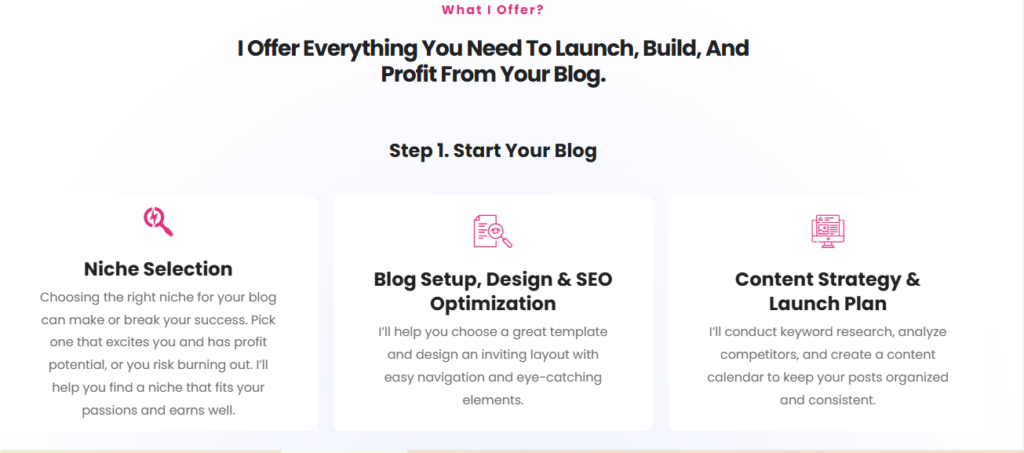
Related Post: How to Build a Blog Following? Expert Tips
3. Promote Your Services to Readers and Beyond
Getting the word out about your services can be a big part of the job, but it’s worth it. Here are a few simple, non-pushy ways to promote:
- Subtle Mentions in Blog Posts: Add a line like “Need help with social media? Check out my services page!” at the end of relevant posts to raise awareness without being overbearing.
- Social Media Posts: Regularly mention your services on your channels. You might be surprised at how many friends or followers show interest—or share with someone who might need your help.
- Use Job Boards: Check out freelance job boards like Upwork or Freelancer. They’re packed with people needing everything from quick tasks to long-term support, making them great for building a portfolio.
Freelancing through your blog has ups and downs, but the flexibility is worth it. Start small, see what works, and soon you’ll offer services you’re proud of!
Option 6: Build and Grow an Email List for Long-Term Profit (How to Make Money with a Blog Without AdSense)
1. Why an Email List Is Important for Bloggers
An email list is a golden ticket! It gives direct access to your audience, turning visitors into loyal fans. I hesitated at first, but once I started collecting emails, engagement skyrocketed!
Think of it this way:
- Direct Communication: Unlike social media, where you rely on algorithms, email is yours to control.
- Higher Engagement Rates: Emails typically see better open and click rates than social media posts.
- Long-Term Value: Your list can be nurtured over time, leading to repeat visitors and sales.
Related Post: What Are the Benefits of Email Communication? My Insights
2. Strategies to Build and Nurture Your Email List
When I first started building my list, I felt overwhelmed. There’s so much advice out there, but it often misses the mark. Here’s what worked for me:
- Create a Valuable Freebie: Offer something useful—like a guide, checklist, or mini-course. Just don’t stop there; this is just step one!
- Generate Traffic: You can’t have a party without guests, right? Create valuable content—think blog posts or videos that answer common questions. This attracts visitors who are interested in what you offer.
- Promote Your Freebie: Use your content to promote your freebie. Direct traffic from your blog or social media to the opt-in page. I learned that simply saying, “Sign up for my newsletter!” doesn’t cut it.
- Engage and Nurture: Once people subscribe, keep them engaged with regular emails. Share tips, updates, or exclusive content. Make it feel like a conversation, not a sales pitch.

3. Monetize Your Email List Effectively
Now, let’s talk about making money from your email list. Here’s where the real fun begins!
- Paid Newsletters: If you provide valuable content, consider launching a paid newsletter. Some bloggers are making serious bank doing this! For instance, Ashley Gets Around reportedly earns over $200k a year from her paid newsletter offering flight deals.
- Digital Products: If you’ve built trust, promote digital products like eBooks or courses. A simple $35 product can net you thousands if you’ve got a solid audience.
- Affiliate Marketing: Recommend products you genuinely believe in. Your audience will appreciate the recommendations, and you can earn commissions. Just be honest—trust is everything!
Ultimately, remember that building an email list is about quality, not just quantity. Focus on nurturing your subscribers, and over time, you’ll see the profits flow in.
How to Make Money with a Blog Without AdSense: Choose the Right Monetization Strategy for You
Blog monetization can feel overwhelming! The trick is finding what fits your content and audience best.
1. Evaluate Each Monetization Option
Check your blog and audience. What do they like? If you write about travel, affiliate marketing can be a great fit. Recommend gear or services, and earn a commission when someone buys through your link. It’s a nice bonus!
Here are some popular monetization options to consider:
- Affiliate Marketing: It’s perfect if you already have products in mind. Sure, it takes some effort, but the rewards can be great.
- Digital Products: Think about e-books or printables. They have low costs and can bring in passive income.
- Memberships: If you have loyal readers, consider offering exclusive content. It’s like a VIP club!
- Sponsored Posts: Working with brands can be lucrative, but honesty with your audience is key.
Finding the right path can be a game changer. When the strategy matches your passions, staying motivated is much easier.
Related Post: How to Promote Your Blog Without Social Media: Tested Strategies
2. Create a Sustainable Income Plan
Once you’ve chosen your strategies, creating a plan is essential. Think of it as a map for a road trip. Set clear goals—how much do you want to earn, and by when?
Here are some tips to keep organized:
- Set Milestones: Break big goals into smaller ones. Celebrate the little victories; they keep you motivated!
- Track Progress: Use spreadsheets or apps to monitor your income. Adjust based on what’s working.
- Stay Flexible: The blogging world changes fast. If something isn’t working, pivot to another strategy without hesitation.
3. Final Tips for Growing Your Blog Income Without AdSense
Monetization isn’t all about ads, and that’s perfectly fine! There are so many ways to boost your blog income without cluttering it with advertisements. Here are a few ideas that I’ve found helpful:
- Focus on SEO: Optimize your content to attract organic traffic. More visitors can lead to more income opportunities.
- Engage with Your Audience: Building a community around your blog matters. Respond to their comments and be active on social media. A loyal audience is more likely to support your efforts.
- Diversify Income Streams: Don’t rely on just one income source. Think about selling merchandise or offering freelance services.
Related Post: Content-Centric SEO: A Comprehensive Guide
It’s a journey of trial and error, and that’s okay! With persistence and smart planning, blogging can be incredibly rewarding. Keep experimenting—each step brings you closer to financial freedom!
Related Post: Is It Too Late to Start Blogging? Your 2024 Guide to Success
Closing Insights: How to Make Money with a Blog Without AdSense
Exploring ways how to make money with a blog without AdSense is not just a creative venture; it’s essential for building a sustainable income stream. From affiliate marketing to selling digital products, each method offers unique opportunities to turn your passion into profit. Remember, the key is to design these strategies to suit your audience and niche.
If you’ve succeeded in blogging or have tips on how to make money with a blog without AdSense, share your insights below! Your experiences could inspire others to pursue their blogging dreams.
I help my clients build effective monetization strategies for their blogs, setting them up to start earning from day one. To learn more, feel free to explore my work or reach out directly!

